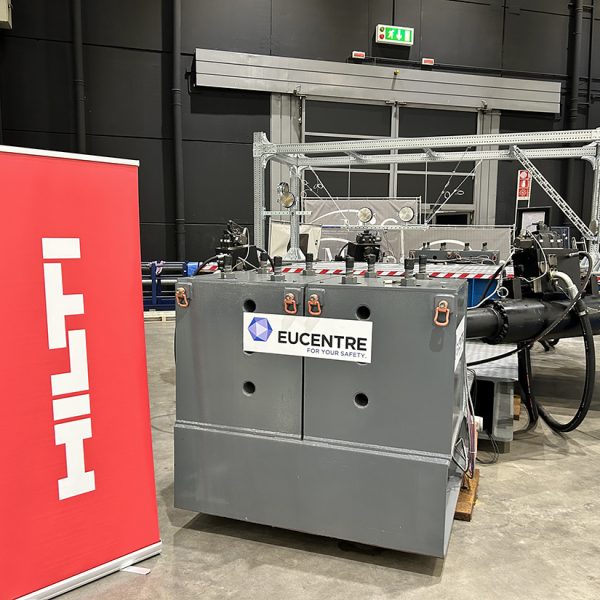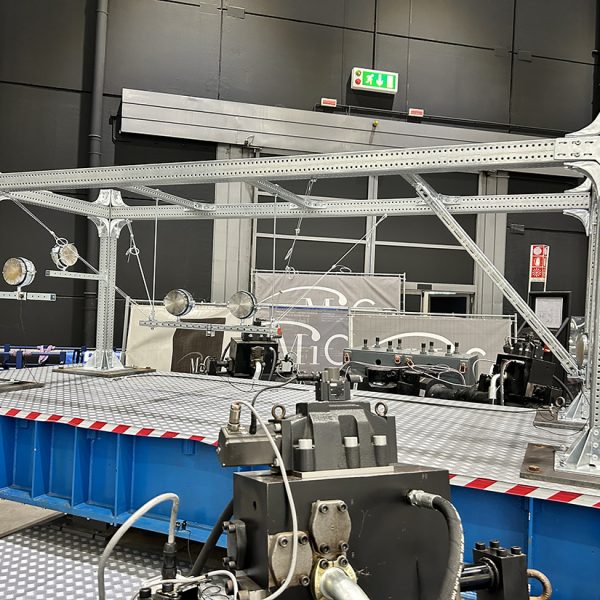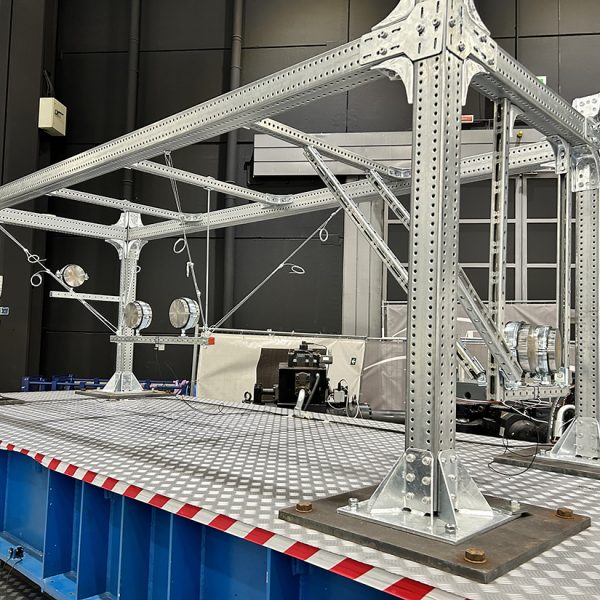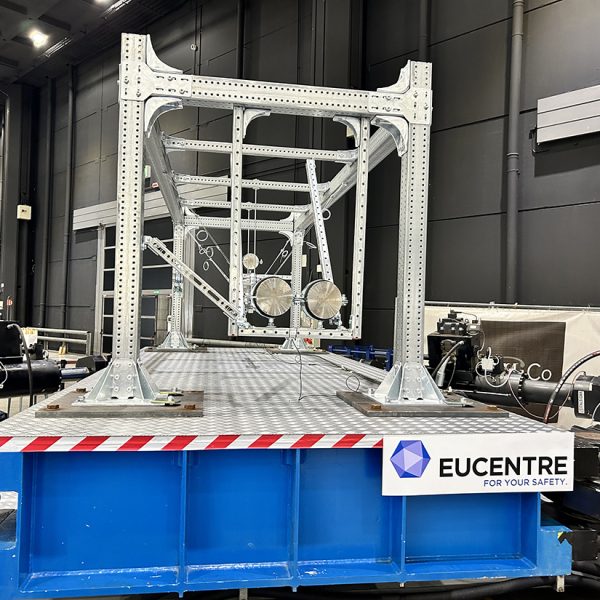During the World Conference on Earthquake Engineering (WCEE2024), Hilti presented a live test on our vibration table (Seismulator) to demonstrate the effectiveness of its non-structural elements under seismic conditions. This was the first time such a test was performed live during an exhibition.
Description of the Test
The test, conducted at the space where our Seismulator was installed, involved a main structure mounted on the vibrating table, to which various non-structural elements were connected. These elements, characterised by different vibration periods, were subjected to a series of tests to identify their own frequencies and verify their resistance to specific seismic inputs.
Technical Details and Test Method
The test consisted of two main phases: a pre-test phase to determine the natural frequencies of each component and an actual test phase, in which the elements were exposed to seismic qualification signals instead of scaled natural signals. This approach was designed to allow a more rigorous evaluation of the performance of the tested components.
Audience and Repeats
The event was designed for a diverse audience, from experts in the field to those interested in seismic engineering for the first time. To ensure maximum usability, the test was repeated several times during the day, allowing many participants to witness and understand the value of live experimentation.
Hilti’s initiative at WCEE2024 underlines the company’s commitment to seismic safety and is also an example of how innovation can be brought directly to end users in a live context. With more than 4,000 participants in attendance, Hilti demonstrated courage and competence, confirming itself as one of the pioneers in the qualification and safety of non-structural elements.
This live demonstration highlighted the importance of rigorous and qualified testing to ensure the safety and reliability of construction, contributing significantly to the advancement of earthquake engineering.
 Eucentre is a non-profit private law foundation whose mission is to conduct research and provide training and services in earthquake and safety engineering
Eucentre is a non-profit private law foundation whose mission is to conduct research and provide training and services in earthquake and safety engineering  Eucentre promotes science, research and innovation for the benefit of the community, offering targeted methodologies and concrete solutions for prevention, safety and resilience. It collaborates with institutions and companies to disseminate competencies for the common good.
Eucentre promotes science, research and innovation for the benefit of the community, offering targeted methodologies and concrete solutions for prevention, safety and resilience. It collaborates with institutions and companies to disseminate competencies for the common good. Shake-tables
Shake-tables Other test systems
Other test systems Eucentre carries out research activities in earthquake engineering and risk reduction through laboratory testing and numerical analysis, aiming to improve the seismic performance of structures and soils and to develop innovative seismic retrofitting techniques.
Eucentre carries out research activities in earthquake engineering and risk reduction through laboratory testing and numerical analysis, aiming to improve the seismic performance of structures and soils and to develop innovative seismic retrofitting techniques. The Foundation promotes diverse and high-quality training activities aimed at academic and professional contexts, with constantly updated and innovative programs and initiatives designed to meet the evolving needs of the sector and society
The Foundation promotes diverse and high-quality training activities aimed at academic and professional contexts, with constantly updated and innovative programs and initiatives designed to meet the evolving needs of the sector and society  Eucentre ensures communication aimed at informing institutions, professionals, and citizens about ongoing activities and projects, with the goal of disseminating useful and accessible content and knowledge. It contributes to promoting a shared and informed culture of prevention and resilience.
Eucentre ensures communication aimed at informing institutions, professionals, and citizens about ongoing activities and projects, with the goal of disseminating useful and accessible content and knowledge. It contributes to promoting a shared and informed culture of prevention and resilience.



